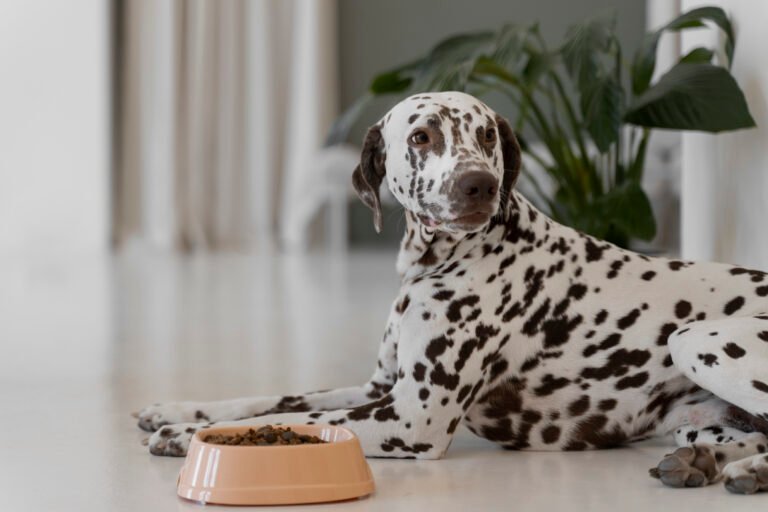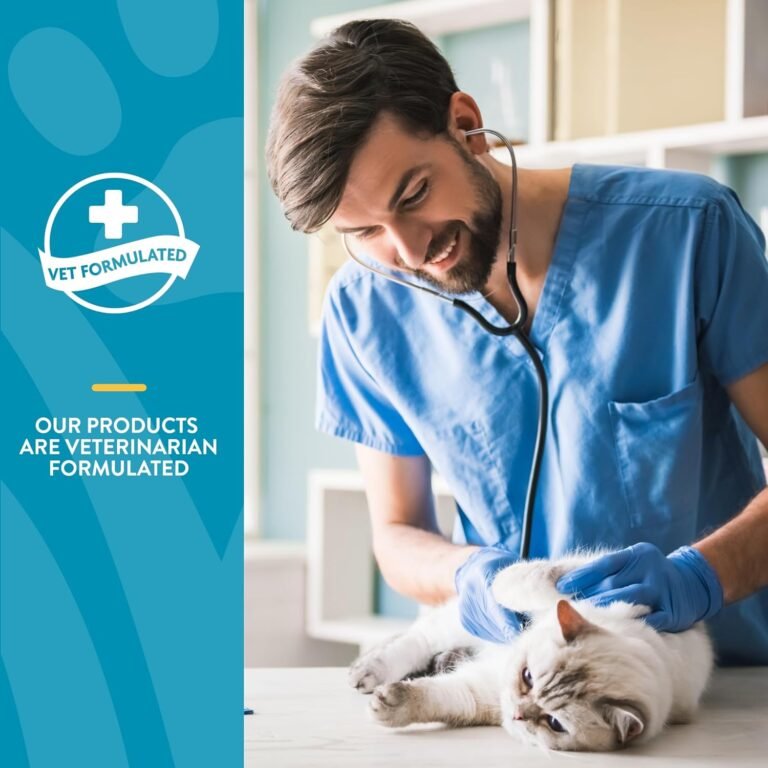Emergency Preparedness: Keeping Your Pets Safe in a Crisis
Emergency preparedness is crucial for the safety and well-being of our pets in times of crisis. As responsible pet owners, it is our duty to ensure that our furry friends are protected and cared for during emergencies. This article will provide valuable information on understanding the importance of emergency preparedness for pets, creating an emergency plan, ensuring their safety during a crisis, and caring for them in the aftermath. By following these guidelines, we can ensure the well-being of our pets and strengthen the bond we share with them.
Key Takeaways
- Identify potential risks and hazards in your area and create an emergency plan accordingly.
- Assemble a pet emergency kit that includes food, water, carriers, and other essential items.
- Develop a communication plan to ensure you can stay connected with your pets during a crisis.
- Research pet-friendly shelters and accommodations in advance to have a safe place for your pets.
- Be mindful of environmental dangers and protect your pets from them during a crisis.
Understanding the Importance of Emergency Preparedness for Pets

Why Emergency Preparedness for Pets Matters
Emergency preparedness for pets is crucial for their safety and well-being during a crisis. As a pet owner, it is your responsibility to ensure that your furry friends are included in your emergency plan. Pet owners understand the deep bond they share with their pets and want to do everything possible to protect them. By being prepared, you can increase the chances of keeping your pets safe and secure when disaster strikes.
To emphasize the importance of emergency preparedness for pets, consider the following:
- According to the American Society for the Prevention of Cruelty to Animals (ASPCA), proper planning can significantly increase the likelihood of survival for both you and your pets during an emergency.
- The Humane Society of the United States advises pet owners to include their pets in their emergency plans, as they are important members of the family.
- Ready America highlights that millions of animal owners nationwide recognize the significance of emergency planning for their pets.
Remember, the key to ensuring the safety of your pets during a crisis is to be prepared beforehand. By taking the time to create an emergency plan and assemble a pet emergency kit, you can minimize the risks and protect your beloved pets.
The Unique Needs of Pets in a Crisis
During a crisis, pets have unique needs that must be taken into consideration. It is important to understand that animal behavior can change in a disaster or high-stress situation. Approach animals, even your own, with caution and watch for signs of distress. Keep up-to-date with identification for your pet by ensuring they wear ID tags on their collar and are microchipped. In addition, it is crucial to have a Pet Disaster Kit prepared. This kit should include food and water for at least 7 days, bowls, a carrier for temporary housing, a small light that can attach to a pet’s collar, blankets, and any necessary medications. It is also recommended to keep a list of nearby pet boarding facilities, shelters, and veterinarians. By being prepared and understanding the unique needs of pets in a crisis, you can ensure the safety and well-being of your beloved animals.
The Emotional Bond Between Pets and Their Owners
As a pet owner, you understand the deep emotional bond that forms between you and your furry companion. Your pet is not just an animal, but a beloved member of your family. They provide unconditional love, companionship, and support, and in return, you provide them with care and protection. This bond is especially important in times of crisis, as it can provide comfort and reassurance to both you and your pet. During an emergency, it is crucial to prioritize the safety and well-being of your pet, ensuring that they are included in your emergency preparedness plan.
Creating an Emergency Plan for Your Pets

Identifying Potential Risks and Hazards
When creating an emergency plan for your pets, it is crucial to first identify the potential risks and hazards they may face during a crisis. This will help you better prepare and protect your furry friends. Some common risks and hazards include natural disasters such as hurricanes, floods, and wildfires, as well as man-made emergencies like fires or chemical spills. By understanding these risks, you can take proactive measures to mitigate them and ensure the safety of your pets.
Assembling a Pet Emergency Kit
When assembling a pet emergency kit, it’s important to include all the necessary items to ensure the safety and well-being of your furry friends. Here are some essential items to include in your pet emergency kit:
- Food and water (for at least 7 days) and bowls
- Carrier for each pet for temporary housing, especially in public spaces (in case of evacuation)
- A small light that can attach to a pet’s collar in case of blackout
- Blankets and towels for bedding
- Medication(s) – include a small ice chest if they need to be refrigerated
- Poop bags
It’s crucial to be prepared for any situation and have these items readily available. By having a well-stocked pet emergency kit, you can ensure that your pets’ needs are met during a crisis.
Developing a Communication Plan for Your Pets
Communication is key when it comes to ensuring the safety and well-being of your pets during a crisis. By effectively communicating with your guests, you can prevent potential dangers and keep your pets happy. It’s important to let your guests know about any specific rules or sensitivities your pet may have. For example, if your pet has a sensitive stomach, inform your guests not to feed them any table scraps. Pay close attention to your pet’s body language during gatherings to ensure they are not feeling stressed. Stress can cause even the best-behaved pets to behave unexpectedly. By keeping an open line of communication with your guests, you can create a safe and enjoyable environment for everyone, including your furry friends.
Ensuring the Safety of Your Pets During a Crisis

Evacuation Strategies for Pets
When it comes to evacuating during a crisis, it’s crucial to prioritize the safety of your furry friends. Remember, if your home is not safe for you, it is not safe for your pet. Make sure to take your pets with you in case of evacuation. While many temporary evacuation spaces require pets to be on a leash or in a carrier, some may not accept pets at all. It’s important to be prepared by identifying a home that will welcome you and your pets for a long period or keeping a list of pet-friendly hotels with your disaster kit. Additionally, have a leash or carrier ready and keep a list of nearby pet boarding facilities, shelters, and veterinarians. Ensuring your pets have proper identification and are up-to-date on vaccines is also crucial during an emergency. By taking these steps, you can ensure the safety and well-being of your beloved pets.
Finding Pet-Friendly Shelters and Accommodations
When seeking shelter for you and your pets during a crisis, it is important to find pet-friendly accommodations that can provide a safe and comfortable environment. Look for hotels or temporary shelters that welcome pets or consider identifying a home where you and your pets can stay for a long period. It is also advisable to keep a list of pet-friendly hotels with your disaster kit. If you find yourself at a temporary shelter with other animals and their owners, take precautions to keep your pet safe from diseases. Additionally, if your dog is aggressive or reactive, remember to bring a muzzle to ensure the safety of everyone involved.
Protecting Your Pets from Environmental Dangers
When it comes to protecting your pets from environmental dangers, there are several important steps you can take. First and foremost, ensure that your home is a safe environment for your pets. Keep them away from fire-starting hazards and consider installing smoke detectors that can contact a monitoring center in case of a risk to your home and pets. Remember, if your home is not safe for you, it is not safe for your pet.
In the event of an evacuation, it is crucial to take your pets with you. While some temporary evacuation spaces may require pets to be on a leash or in a carrier, others may not accept pets at all. If you anticipate a long evacuation period, it is important to identify a safe home where you and your pets can stay temporarily.
To ensure the well-being of your pets during a crisis, it is essential to have a pet disaster kit prepared. This kit should include food and water for at least 7 days, as well as bowls for feeding. Each pet should have their own carrier for temporary housing, especially in public spaces. Additionally, consider attaching a small light to your pet’s collar in case of a blackout.
Remember to keep a list of nearby pet boarding facilities, shelters, and veterinarians. This will help you find temporary housing for your pets if needed. Lastly, be familiar with your animals so that you can safely reunite with them or house them temporarily if necessary.
Caring for Your Pets in the Aftermath of a Crisis

Reuniting with Your Pets After an Emergency
After an emergency, it is a relief to be reunited with your beloved pets. However, it is important to take certain steps to ensure their safety and well-being. Here are some tips to help you navigate this process:
-
Be familiar with your animals so that they can safely get them to you, or house them temporarily. Have a leash or carrier ready.
-
Keep a list of nearby pet boarding facilities, shelters, and veterinarians. This will come in handy if you need temporary housing for your pets or require veterinary care.
-
Create a Pet Disaster Kit that includes essential items such as food and water (for at least 7 days), bowls, carriers, a small light that can attach to a pet’s collar in case of blackout, blankets, and towels for bedding, and any necessary medication.
-
Consider microchipping your pets. This can greatly increase the chances of being reunited with them if they become lost during an emergency.
-
Stay informed about local resources and organizations that can assist with reuniting lost pets with their owners. This includes services like Lost and Found and Pet Loss Services.
Remember, the well-being of your pets is just as important as your own during an emergency. Taking these steps will help ensure their safety and provide peace of mind for both you and your furry companions.
Dealing with Trauma and Anxiety in Pets
Dealing with trauma and anxiety in pets can be a challenging experience. Trauma can occur in pets as a result of a disaster or high-stress situation. It is important to approach animals, even your own, with caution and watch for signs of distress. Here are some tips to help your pet cope with trauma and anxiety:
- Provide a safe and secure environment for your pet. Create a designated area where they can retreat to when they feel overwhelmed.
- Maintain a routine and provide familiar objects and scents to help comfort your pet.
- Use positive reinforcement techniques to help your pet build confidence and trust.
Remember, each pet is unique and may require different strategies to cope with trauma and anxiety. If you are unsure how to help your pet, consult with a professional veterinarian or animal behaviorist for guidance and support.
Seeking Veterinary Care and Support
After a crisis, it is important to seek veterinary care and support for your pets. They may have experienced physical injuries or emotional trauma during the emergency, and it is crucial to address their needs. Calming aids can be helpful in reducing anxiety and stress in pets. Additionally, it is recommended to contact your veterinarian for guidance on any necessary medical treatments or check-ups. They can provide expert advice on how to care for your pets and ensure their well-being.
Here are some resources that can assist you in seeking veterinary care and support:
- Behavior Webinars
- Behavior & Training Helpline
- Behavior & Training Library
- Vet Clinic
- Veterinary Services
- Spay/Neuter
- Pharmacy
- Vaccine Clinics
- Euthanasia/Cremation
Remember, your pets rely on you for their health and safety, so it is essential to prioritize their veterinary care and support in the aftermath of a crisis.
Caring for Your Pets in the Aftermath of a Crisis
Conclusion
In conclusion, it is crucial to prioritize the safety and well-being of our pets during times of crisis or emergency. By being prepared and having a disaster plan in place, we can ensure that our furry friends are protected. Remember to keep up-to-date identification for your pets, create a pet disaster kit with essential supplies, and have a list of nearby pet boarding facilities and veterinarians. Additionally, it is important to be aware of your pet’s behavior in stressful situations and approach them with caution. By taking these steps, we can ensure the safety and survival of our beloved pets in any emergency.
Frequently Asked Questions
Why is emergency preparedness important for pets?
Emergency preparedness is important for pets because it ensures their safety and well-being during a crisis. It allows pet owners to have a plan in place to protect their pets and meet their unique needs in emergency situations.
What are the unique needs of pets in a crisis?
Pets have unique needs in a crisis, including access to food, water, shelter, and medical care. They may also require special accommodations, such as pet-friendly shelters or accommodations, to ensure their safety and comfort.
What is the emotional bond between pets and their owners?
The emotional bond between pets and their owners is a strong and important connection. Pets provide companionship, comfort, and support to their owners, and in times of crisis, this bond becomes even more crucial for both the pet and the owner’s well-being.
How can I identify potential risks and hazards for my pets?
To identify potential risks and hazards for your pets, you should assess your living environment and consider factors such as natural disasters, toxic substances, and potential escape routes. It’s important to be aware of any potential dangers that could pose a threat to your pets’ safety.
What should be included in a pet emergency kit?
A pet emergency kit should include essential items such as food and water for at least 7 days, bowls, a carrier for temporary housing, a leash, blankets, medication, and identification tags. It’s important to have all the necessary supplies to meet your pets’ needs during an emergency.
How can I find pet-friendly shelters and accommodations during a crisis?
To find pet-friendly shelters and accommodations during a crisis, you can contact local animal shelters, veterinary clinics, or emergency management agencies. They can provide information on available options and help you make arrangements to ensure the safety of your pets.







